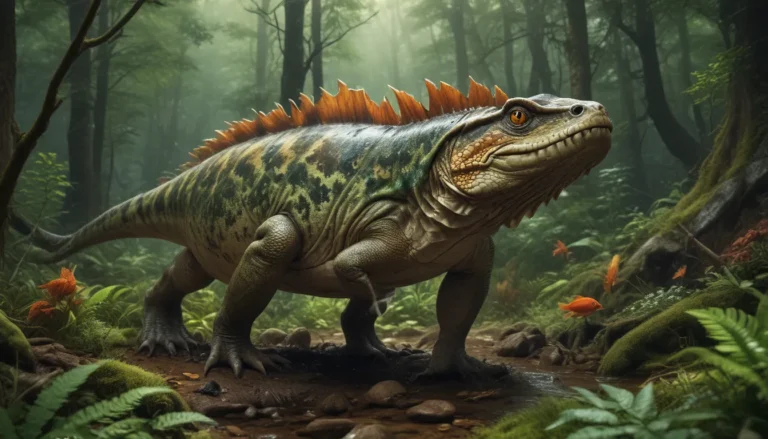A Note About Images: The images used in our articles are for illustration purposes only and may not exactly match the content. They are meant to engage readers, but the text should be relied upon for accurate information.
In the intricate web of life, trophic levels play a vital role in ecological studies, offering valuable insights into energy transfer and food chain dynamics within ecosystems. By delving into the enigmatic world of trophic levels, we can unravel the mysteries behind their significance and how they shape the intricate balance of nature. From their origins to implications for biodiversity and ecological stability, trophic levels hold a wealth of fascinating facts waiting to be explored.
Understanding Trophic Levels: A Closer Look
What is a Trophic Level?
At its core, a trophic level represents an organism’s position in a food chain or web. It signifies the feeding relationships and energy transfer between different organisms within an ecosystem. Typically categorized into primary producers, herbivores, primary carnivores, and beyond, trophic levels illustrate the interconnectedness of organisms in an intricate dance of energy flow.
The Flow of Energy
Central to trophic levels is the flow of energy. Energy enters an ecosystem through primary producers, like plants or algae, which harness sunlight to convert it into chemical energy through photosynthesis. This energy then cascades through different trophic levels as organisms consume and are consumed by others, creating a dynamic cycle of energy transfer.
The 10% Rule
A fundamental concept in trophic levels is the 10% rule, stating that only about 10% of energy is passed on from one trophic level to the next. This phenomenon is due to energy losses through metabolic processes and heat, resulting in diminished energy availability as it ascends through the trophic hierarchy.
Unraveling the Mysteries
The Role of Decomposers
Decomposers play a crucial role in trophic levels by breaking down organic matter and recycling nutrients back into the ecosystem. Feeding on dead plants and animals, decomposers facilitate nutrient recycling, ensuring that vital elements are reintroduced into the ecosystem for reuse by primary producers, completing the cycle of life.
Trophic Cascade Effects
Trophic cascades occur when a disruption or change in one trophic level reverberates throughout the ecosystem, impacting its delicate balance. For instance, the removal of top predators can trigger a surge in herbivore populations, leading to adverse effects on primary producers and restructuring the ecosystem’s composition.
Human Impact on Trophic Levels
Human activities, such as overfishing and habitat destruction, wield a significant influence on trophic levels, disrupting the delicate balance of ecosystems. By altering species populations or disturbing ecological equilibrium, human actions can unleash cascading effects that ripple through entire ecosystems, underscoring the importance of conservation efforts.
Trophic Efficiency
Trophic efficiency measures the amount of energy transferred between trophic levels, typically averaging around 10%. Energy losses through respiration, excretion, and incomplete digestion underscore the challenges organisms face in acquiring sufficient energy for survival and reproduction, highlighting the intricacies of energy transfer within ecosystems.
The Complexity of Trophic Interactions
Trophic interactions within ecosystems are multifaceted, encompassing direct feeding relationships and indirect interactions that culminate in feedback loops. Changes in one trophic level reverberate throughout the food web, shaping ecosystem dynamics and stability in a delicately woven tapestry of interdependence.
Delving Deeper into the Enigmatic World
In conclusion, trophic levels serve as a cornerstone for understanding the flow of energy and nutrients within ecosystems, offering profound insights into the intricate web of life’s interconnectedness. The captivating facts surrounding trophic levels shed light on the delicate balance that permeates nature, from biomagnification’s toxic journey through trophic levels to keystone species’ disproportionate impact on ecosystem dynamics.
By studying trophic levels, we gain a deeper appreciation for the complex tapestry of life within our planet and the critical role these levels play in maintaining ecosystem balance. As we strive to conserve and preserve biodiversity, understanding trophic levels empowers us to make informed decisions that safeguard nature’s delicate equilibrium.
FAQs: Exploring Common Questions
- What are trophic levels?
-
Trophic levels signify the positions in a food chain or web where organisms derive energy, elucidating the transfer of energy and nutrients across different organisms.
-
How many trophic levels are there?
-
The number of trophic levels varies based on ecosystem complexity but generally includes producers, primary consumers, secondary consumers, and tertiary consumers.
-
What is the significance of trophic levels?
-
Trophic levels illuminate energy and nutrient flow within ecosystems, offering insights into organism interactions and ecosystem stability.
-
What is biomagnification?
-
Biomagnification refers to the process where pollutants or toxins become more concentrated as they traverse the food chain, posing health risks to organisms.
-
What are keystone species?
-
Keystone species wield substantial influence on ecosystem dynamics, and their removal can trigger profound changes in biodiversity and ecosystem functionality.
-
How do trophic levels impact biodiversity?
-
Trophic levels are pivotal for upholding biodiversity, as disruptions can cascade through the ecosystem, influencing overall diversity.
-
Are trophic levels consistent across ecosystems?
-
Trophic levels can vary based on ecological factors like available resources, predation patterns, and the presence of keystone species.
-
How can studying trophic levels aid conservation efforts?
- Understanding trophic levels identifies key species crucial for ecosystem stability, informing conservation strategies to preserve biodiversity.
Embark on a journey of discovery through the enigmatic realm of trophic levels, unraveling the intricacies of energy flow and ecological interactions that shape our natural world. As we delve deeper into the mysteries of trophic levels, we unveil a profound understanding of nature’s delicate balance, underscoring the interconnectedness of all living organisms and the imperative of safeguarding our ecosystems for generations to come.






